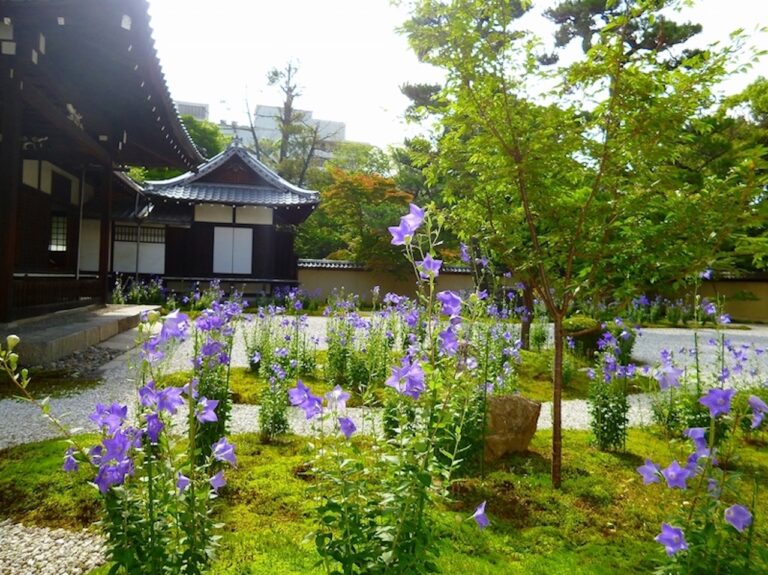
Botanical Crests - Kikyo (Chinese bellflower)
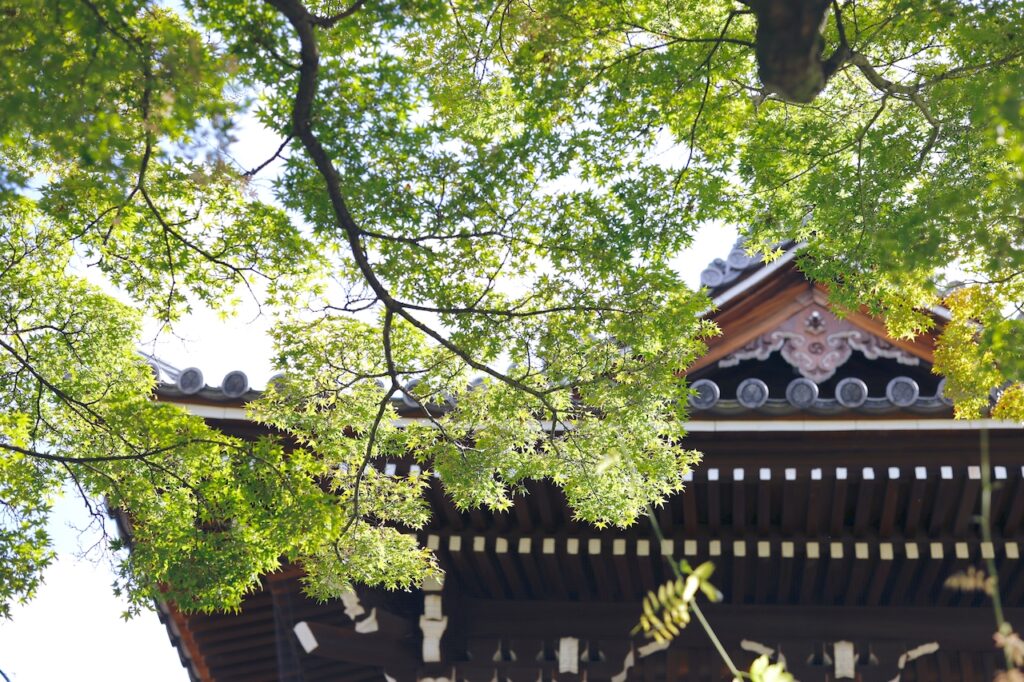

Crest associated with Saint Nichchu, who became the ninth generation after a question and answer session.
A residential area west of Horikawa Dori. Walking along the narrow street, you will see a large stone monument and a magnificent gate. This is Myorenji Temple. The temple's crest is "Mitsuba Kaede" (three-leaf maple), which is decorated with three maple leaves.
The history of Myorenji Temple reveals that it was founded as early as 1294, and at that time it was located in Gojo Nishinotoin, south of its present location. Myoren Honin, a sake brewer [Yanagiya], took refuge in Nichiren Shonin, who had come to Kyoto to propagate the Buddhist teachings in accordance with Nichiren Shonin's last will and testament. The residence of the Yanagiya family was converted into a small hall and renamed Yanagidera, which is said to be the origin of Myorenji Temple. The temple declined due to the Tenbun-hokei Rebellion and various other legal troubles, and changed its location frequently, but moved to its current location in 1587 when Hideyoshi Toyotomi built the Juraku-dai. Since then, the temple has stood for more than 450 years in this Nishijin area, and is a temple of the Hokke school of Buddhism.
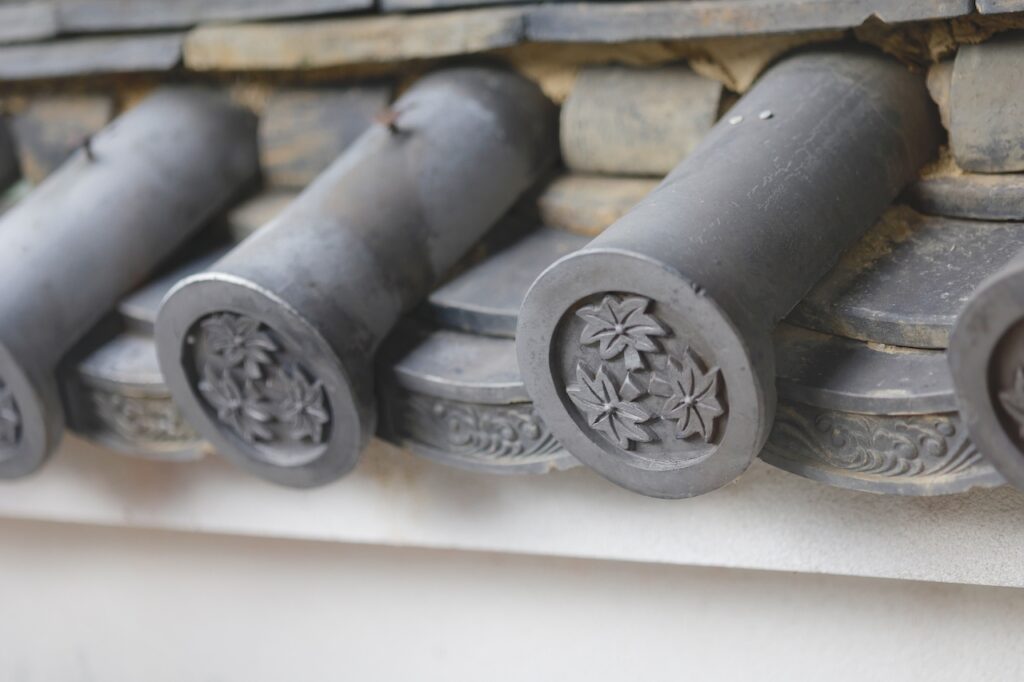

The three-leaf maple came to be used as a crest around 1450, before the temple was moved to Nishijin. It is said that this was triggered by a question-and-answer session between Nichiryu Shonin, the 8th head priest of Myorenji Temple, and Nichichichu Shonin, the 9th head priest of Myorenji Temple. Mr. Mitsuteru Sano, chief steward of Myorenji Temple, told us about it.
Nichichu Shonin was originally the headmaster of Mitsui Temple of the Tendai sect of Buddhism. The headmaster of a school is like a school principal who instructs monks. Nichichichu had a dialogue with Nichiryu, and converted from the Tendai sect to the Lotus sect. He became the ninth generation. The father of Nichichu Shonin was Lord Imadegawa Kikutei, and the family crest of the Imadegawa family is a three-leaf maple, which is why Myorenji Temple also uses the three-leaf maple.
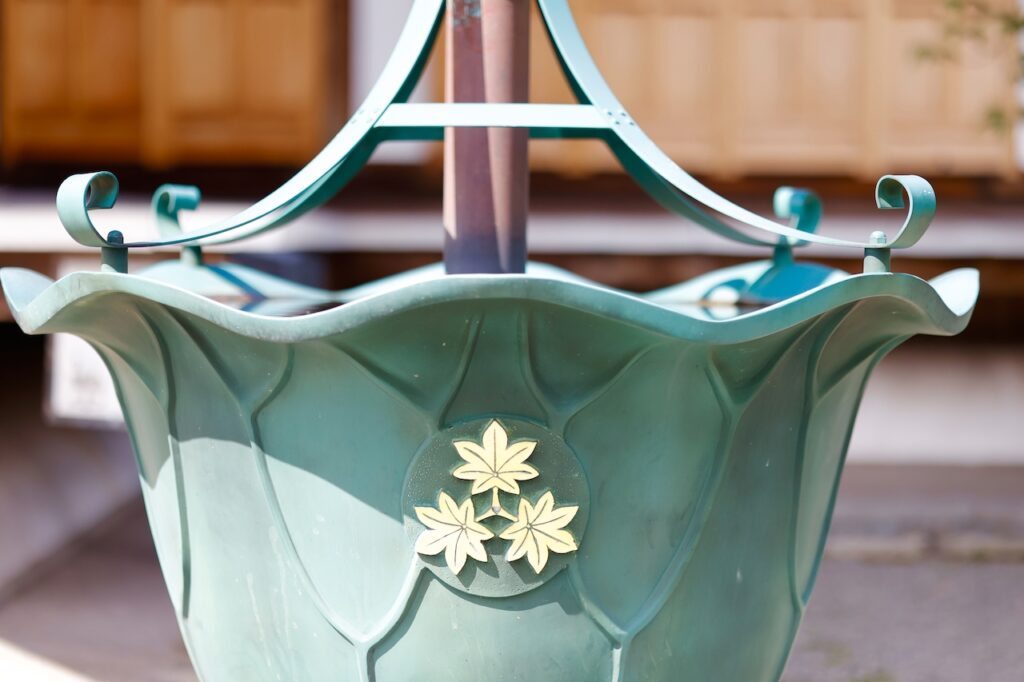

Strolling in the precincts of the temple, looking for mitsuba maple on the roof tiles of the buildings.
In fact, besides the three-leaf maple, Myorenji Temple has two other crests. The head of the temple, Kancho, wears the "14-Ura Chrysanthemum Crest" because Priest Nittatsu, who rebuilt Myorenji, had a close relationship with the Fushimi Palace family. The pagoda also uses the "Tsurumaru Mon" associated with Nichiren Shonin. At Myorenji Temple, the three-leaf maple leaf crest is used only for events held at the head temple," he said.
The maple leaf pattern is displayed only in important scenes. However, if you look closely, you will find that the roof tiles of the buildings also have the mitsuba maple leaf pattern. When strolling around the temple grounds, look for them as you walk. Many of the buildings of Myorenji Temple were destroyed in the Great Fire of Tenmei that ravaged the city of Kyoto in 1788. However, the bell tower on the right after entering the temple gate is a valuable building that escaped the fire. Built in the early Edo period (1603-1867), it is a "Hakama-koshi-shaped bell tower," a style rarely seen in Japan. In front of the belfry is a large maple tree, and in the fall, visitors can enjoy the magnificent sight of the maple trees and the belfry, which stands tall and strong after many years of history.
Another unique autumnal competition at Myorenji Temple is the cherry blossoms. The "Gokaishiki Cherry Blossoms" in front of the main hall bloom from fall to spring. The Gokai Ceremony is held on October 13, the day Nichiren Shonin passed away. From that time until spring, the cherry trees continue to bloom for six months. There are about seven trees on the grounds, and they bloom prettily," says Sano. It is a rare place where you can enjoy the red of the maple trees and the pink of the cherry blossoms at the same time.
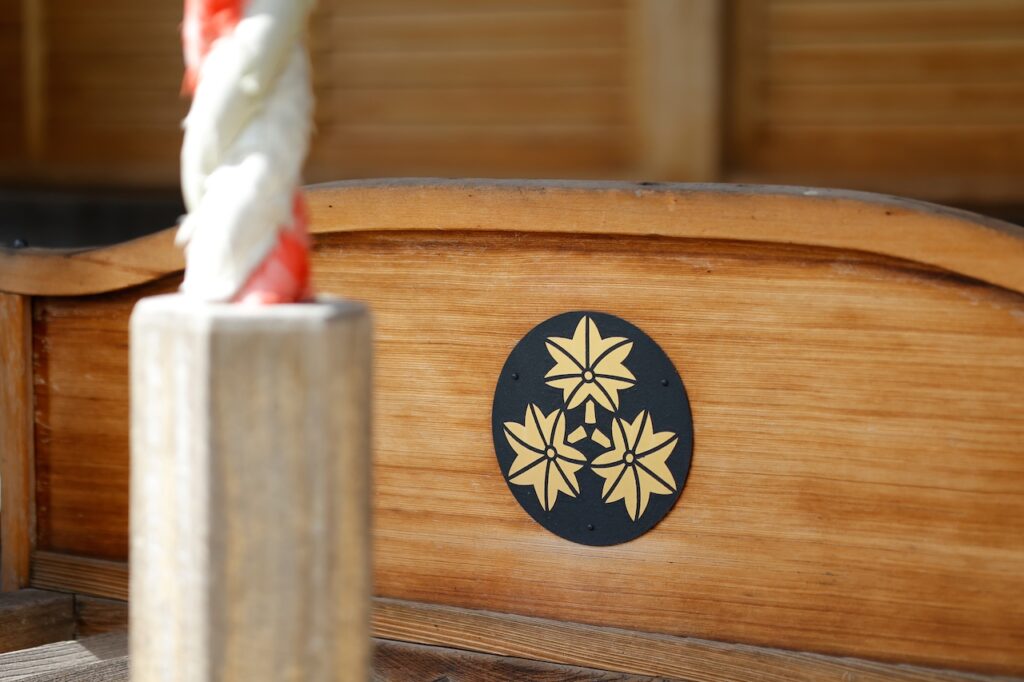

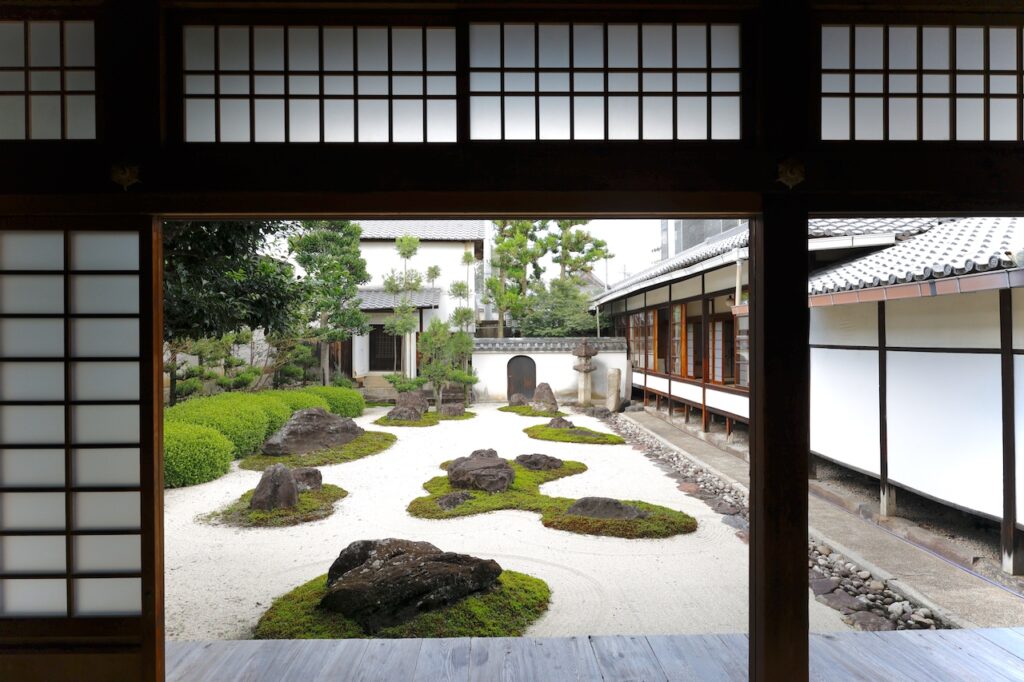

Peaceful autumn days with quiet contemplation of the fusuma paintings and stone garden
There is more to see inside the building as well. Fusuma paintings depicting seasonal scenes decorate the inner sanctuary. These were dedicated by Japanese-style painter Toyokazu Kouno in 1981. The fusuma paintings of autumnal scenes also depict autumn leaves, so you can always feel the autumnal atmosphere. The grandfather of Mr. Toyokazu Kouno, who created these fusuma paintings, is the Japanese-style painter Umelei Kouno. He was instrumental in establishing the Kyoto School of Painting, the predecessor of Kyoto City University of Arts, during the Meiji period (1868-1912), and is known for having taught Takeuchi Seiho and Uemura Shoen.
The fusuma paintings previously placed in the location of these fusuma were the handiwork of the Hasegawa Tohaku school of painters. There are 42 paintings in total, and since they are now designated as Important Cultural Properties, they are stored in the Treasure House and can only be seen during special exhibitions. The paintings were once displayed in the Okushoin, a special exhibition hall. It was a spectacular sight," Sano recalls.
Surrounded by buildings, the stone garden of 16 arhats is also worth seeing. The garden is said to have been created by Gyokuchibo Nisshu, a monk of Myorenji Temple who was involved in the construction of Katsura Imperial Villa, and was restored in the Showa period (1926-1989). Some of the famous stones were moved from Fushimi Castle by Toyotomi Hideyoshi. According to Mr. Sano, from some angles it looks as if Fugen Bosatsu and Monju Bosatsu are arranged with Shakyamuni Buddha in the center. In the season of maple leaves, spend a peaceful autumn day at Myorenji Temple, which is related to maple trees, by quietly admiring the garden and sliding door paintings.
Family crests, which have been used as symbols of family status, and crests unique to shrines and temples, called kamon or temple crests, originated in the Heian period (794-1185) when court nobles added crests to their furnishings and personal belongings as landmarks.
There are currently more than 240 types, the most common of which are botanical crests with flower and leaf motifs, rich in plants of all four seasons.
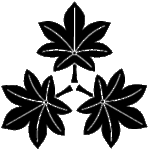

Over 600 interviews per year! An order site carefully selected by the editors who knows Kyoto and Shiga.
nowOfficial LINE friend registration500 yen OFF coupon is being issued!
Distributed every Friday morning at 8:00 am! From new restaurant information to event information that we want to share with you, We deliver articles about Kyoto that are useful to know. About 20,000 people have registered.Click here to add a friend!
 News
News Feature article
Feature article Featured event
Featured event